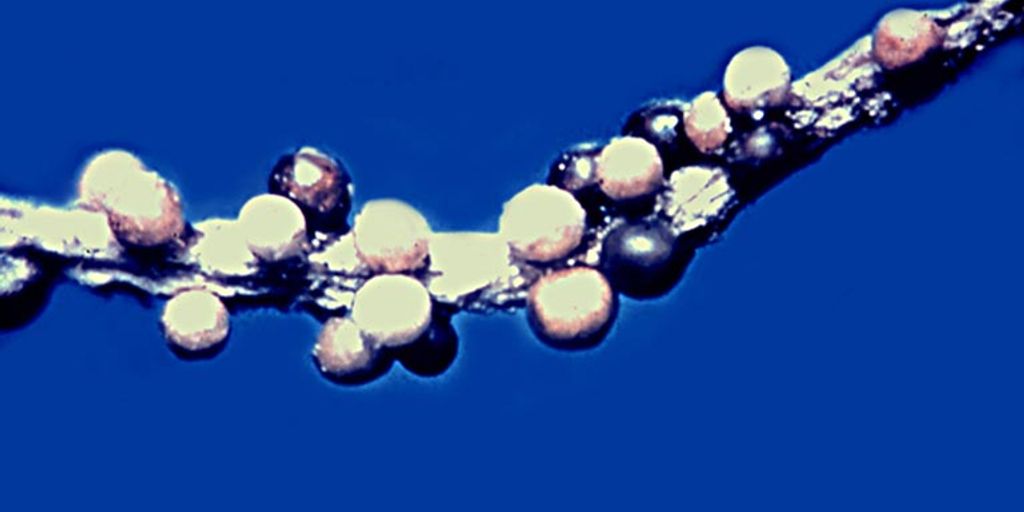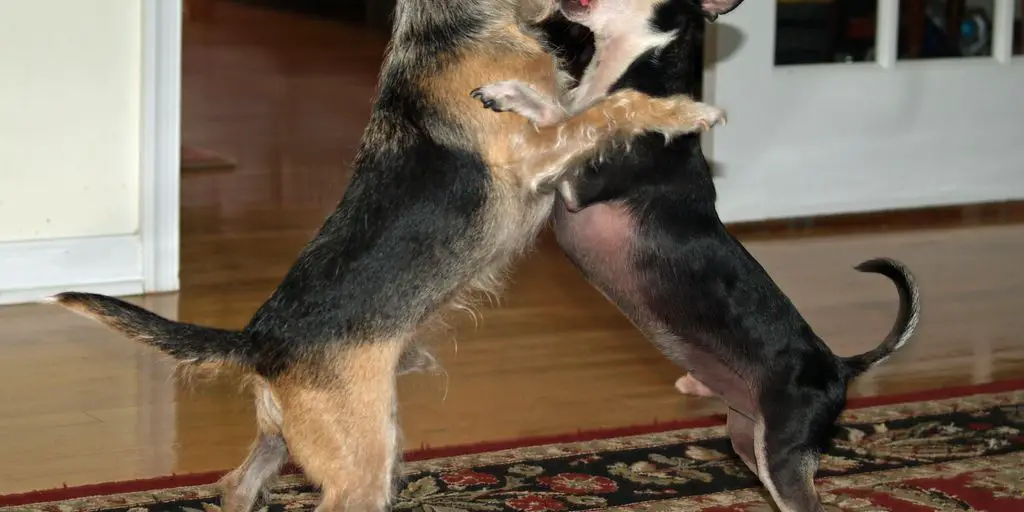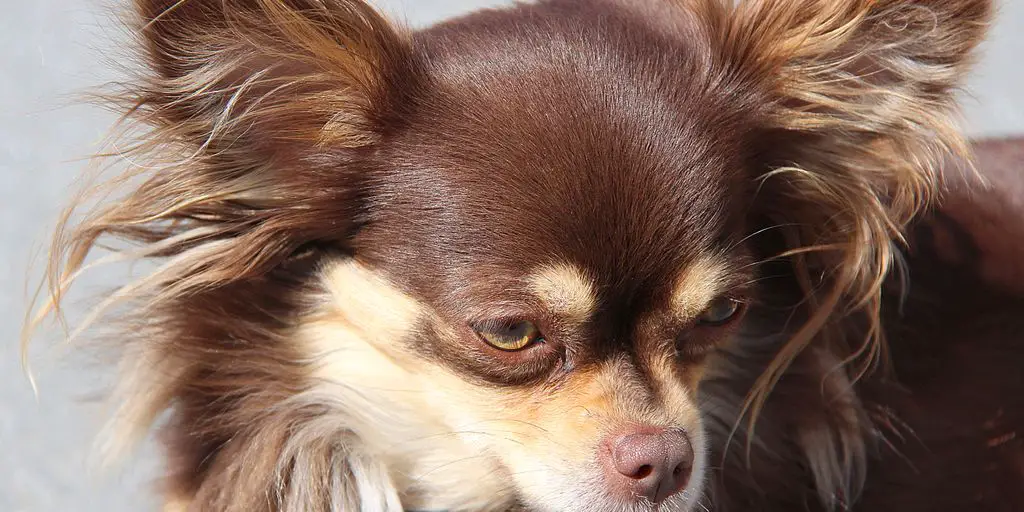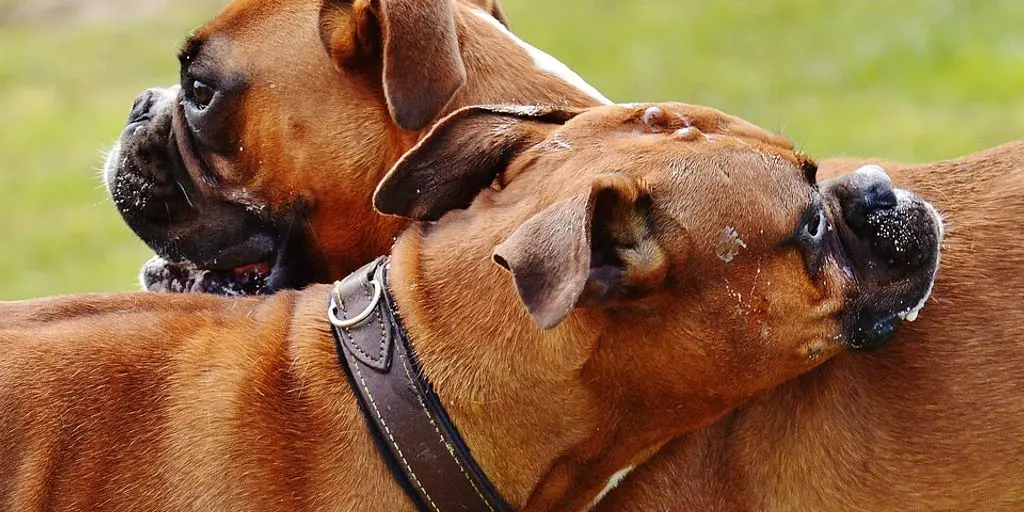Dogs can develop various types of cysts, which are essentially fluid-filled sacs that can appear on their skin or internal organs. These cysts can vary in size, shape, and severity, and while many are benign, some may require medical attention. Understanding the different types of cysts that can affect dogs is crucial for pet owners to ensure the health and well-being of their furry friends.
Key Takeaways
- Cysts on dogs can be either benign or malignant, and their appearance can vary depending on their type and location.
- Common types of cysts include sebaceous cysts, follicular cysts, epidermoid cysts, dermoid cysts, true cysts, and false cysts.
- Infected cysts can cause additional symptoms such as redness, swelling, and discharge, and may require prompt veterinary care.
- Preventative measures, such as proper diet, regular check-ups, and good grooming and hygiene, can help reduce the likelihood of cyst formation.
- It is essential to consult a veterinarian if you notice any unusual lumps or symptoms in your dog to determine the appropriate diagnostic tests and treatment options.
Sebaceous Cysts

What Are Sebaceous Cysts?
Sebaceous cysts are those annoying little bumps that pop up on your dog’s skin. They usually appear as a single raised bump that might look white or slightly blue. If one of these cysts bursts, it can ooze a grayish-white, brownish, or even cottage cheese-like discharge. These cysts typically develop on the head, neck, torso, or upper legs.
Causes of Sebaceous Cysts
These cysts form when the sebaceous glands, which are associated with hair follicles, get blocked. The glands produce sebum, an oily substance that can fill up and create a cyst. Dogs are more prone to these cysts than cats, and they can sometimes get infected with bacteria, making things even more complicated.
Treatment Options for Sebaceous Cysts
When it comes to treating sebaceous cysts, there are a few options:
- Monitoring: If the cyst isn’t bothering your dog, sometimes the best course of action is to just keep an eye on it.
- Surgical Removal: If the cyst is causing discomfort or has become infected, your vet might recommend removing it surgically.
- Medications: In cases where there’s an infection, antibiotics might be prescribed to help clear it up.
It’s important to monitor these cysts closely to avoid bigger problems from developing. If you notice any changes or if the cyst seems to be causing your dog discomfort, it’s best to consult your vet.
Follicular Cysts
Understanding Follicular Cysts
Follicular cysts are benign bumps that originate from the hair follicle. They can release a thick substance that might be white, yellow, or brown. As they grow, they can become itchy or painful. These cysts are quite common in dogs and can sometimes clear up on their own.
Symptoms of Follicular Cysts
The symptoms of follicular cysts include the appearance of large bumps on the skin, which may be accompanied by a foul odor. These cysts can vary in color and texture and are often found around the mouth and legs. If the cysts become infected, they may require antibiotic treatment.
How to Treat Follicular Cysts
Treatment options for follicular cysts depend on their severity. In some cases, they may need to be surgically removed, especially if they are growing or causing discomfort. It’s essential to monitor the cysts and consult a vet if they show signs of infection or significant growth.
Regular check-ups and maintaining a healthy diet for dogs can help in managing and preventing follicular cysts.
Epidermoid Cysts
What Are Epidermoid Cysts?
Epidermoid cysts are a type of skin cyst in dogs. They’re usually benign and contain a mixture of keratin and sebum, which lubricate the skin and hair. These cysts are often confused with sebaceous cysts, but they have distinct characteristics.
Causes and Symptoms
Epidermoid cysts can develop due to various reasons, including blocked hair follicles or skin trauma. They often appear as small, round bumps under the skin and can vary in size. Common symptoms include redness, swelling, and sometimes a foul odor if the cyst becomes infected.
Treatment and Management
Treatment options for epidermoid cysts depend on their size and whether they are causing discomfort to your dog. In many cases, they can be left alone if they are not problematic. However, if the cyst becomes infected or grows large, surgical removal may be necessary. Always consult your vet for the best course of action.
It’s essential to monitor any skin changes in your dog and consult your vet if you notice anything unusual. Early detection can make treatment much easier and more effective.
Dermoid Cysts
Introduction to Dermoid Cysts
Dermoid cysts are quite rare and usually stem from genetic predispositions. These congenital cysts form during embryonic development, often due to a separation of the top layer of the skin from the underlying tissue. You might find these cysts more frequently in certain breeds like Rhodesian Ridgebacks and Kerry Blue Terriers.
Signs and Symptoms
Dermoid cysts can appear as lumps on your dog’s skin, often along the midline of the back. They might not cause any discomfort initially, but if they become infected or grow larger, they can lead to pain and other issues. Keep an eye out for any unusual lumps or bumps on your dog’s body.
Treatment Options
If your dog has a dermoid cyst, the most effective treatment is usually surgical removal. This is especially important to prevent any potential complications. Always consult your vet to discuss the best course of action for your furry friend.
Regular check-ups can help catch these cysts early, making treatment easier and more effective.
True Cysts

True cysts are a type of cyst that has a secretory lining, meaning they have a membrane that produces secretions. These cysts often form in areas where your dog’s glands are located, such as the head, neck, and body. They usually develop due to blocked ducts, which cause an accumulation of secretions in a concentrated area. Complete removal of the cyst, including its lining, is necessary to prevent recurrence.
True cysts can appear in various parts of your dog’s body, but they are most commonly found in the following areas:
- Head
- Neck
- Body
- Eyelids
These cysts are often filled with fluid produced by the glands and may appear as nodules or vesicles. They can be slightly translucent and may cause the surrounding hair to fall out.
The primary treatment for true cysts is surgical removal. It’s crucial to remove the entire cyst, including its lining, to prevent it from coming back. In some cases, your vet may also recommend additional treatments to manage any underlying issues that may have caused the cyst to form in the first place. The prognosis is generally good if the cyst is completely removed, but there’s always a chance of recurrence if any part of the lining is left behind.
If you notice any unusual lumps or bumps on your dog, it’s always best to consult your vet for a proper diagnosis and treatment plan.
False Cysts
Understanding False Cysts
False cysts are quite different from true cysts. They lack the secretory lining that true cysts have. Often, these cysts form due to trauma or injury. When tissue dies and liquefies, it creates a fluid-filled mass that resembles a cyst. The good news is that most false cysts tend to resolve on their own as the injury heals.
Symptoms and Diagnosis
Identifying a false cyst can be tricky since they look similar to other types of cysts. Typically, they appear as lumps under the skin. If your dog has recently experienced trauma and you notice a lump, it might be a false cyst. A vet can confirm this through a physical examination and possibly a needle aspiration to examine the fluid inside.
Treatment Options
In many cases, false cysts don’t require any treatment and will disappear as the underlying injury heals. However, if the cyst becomes painful or infected, your vet might recommend draining it or prescribing antibiotics. In rare cases, surgical removal might be necessary, especially if the cyst doesn’t resolve on its own or keeps recurring.
It’s always a good idea to keep an eye on any lumps or bumps on your dog and consult your vet if you notice any changes or if the lump doesn’t go away. Regular check-ups can help catch issues early and keep your furry friend healthy.
Infected Cysts
What Are Infected Cysts?
Infected cysts in dogs are essentially cysts that have become contaminated with bacteria or other pathogens. This can happen if the cyst is ruptured or irritated, allowing bacteria to enter. These cysts can be quite painful for your furry friend and often require prompt medical attention.
Symptoms of Infection
When a cyst becomes infected, you might notice several signs, including:
- Redness and swelling around the cyst
- Pus or other discharge
- Foul odor
- Increased pain or sensitivity
- Fever or lethargy in severe cases
How to Treat Infected Cysts
Treating an infected cyst usually involves a few steps:
- Seek veterinary care: It’s crucial to get a professional diagnosis and treatment plan.
- Clean the wound: Your vet may recommend cleaning the area with a mild antiseptic.
- Apply ointment: Antibiotic ointments can help to combat the infection.
- Cover with a bandage: Keeping the area covered can prevent further contamination.
- Maintain hygiene: Regularly check and clean the area to ensure it heals properly.
Infected cysts can be a serious issue, so it’s always best to consult your vet for the most effective treatment plan.
By following these steps, you can help your dog recover quickly and prevent future infections.
Cysts on Paws
Types of Paw Cysts
Paw cysts in dogs can be quite noticeable. You might see your dog licking or chewing at the affected area, and it can even cause them to limp. The most common types of paw cysts include interdigital cysts, which form between the toes, and sebaceous cysts, which are caused by blocked oil glands. Keeping an eye out for these can help you catch them early.
Symptoms and Diagnosis
The symptoms of paw cysts can vary, but common signs include swelling, redness, and discharge. Your dog might also show signs of discomfort or pain when walking. To diagnose a paw cyst, your vet will likely perform a physical examination and may recommend additional tests like a biopsy or an X-ray to rule out other issues.
Treatment and Care
Treating paw cysts often involves keeping the area clean and dry to prevent infection. In some cases, your vet might prescribe antibiotics or anti-inflammatory medications. For interdigital cysts, home remedies like Epsom salt soaks and natural paw balms can be quite effective. In more severe cases, surgical removal might be necessary.
It’s crucial to keep your dog’s paws clean and dry to promote healing and prevent further issues.
Cysts on Internal Organs
When it comes to cysts on internal organs in dogs, things can get a bit more serious. These cysts can develop in places like the liver, kidneys, or ovaries, and they might not always show obvious symptoms. It’s crucial to keep an eye on your dog’s health and get regular check-ups to catch any issues early on.
Preventing Cysts in Dogs
Preventing cysts in dogs is all about maintaining their overall health and well-being. Here are some tips to help keep those pesky cysts at bay.
Diet and Nutrition
A balanced diet is crucial for your dog’s health. Make sure to feed them high-quality food that meets all their nutritional needs. A healthy diet can help prevent skin problems and other issues that might lead to cyst formation. If your dog has specific dietary needs or allergies, consult your vet to find the best food options.
Regular Check-ups
Regular vet visits are essential. During these check-ups, your vet can spot any early signs of cysts or other health issues. Early detection is key to preventing more serious problems down the line. Don’t skip those annual visits!
Grooming and Hygiene
Good grooming practices can go a long way in preventing cysts. Regular brushing helps remove loose hair and keeps the follicles clear, which can prevent blockages. Bathing your dog with a gentle shampoo can also help keep their skin clean and reduce the risk of cysts. Proper grooming can help prevent the formation of follicular cysts.
Keeping your dog’s skin clean and dry is crucial in reducing moisture and bacteria, which can lead to cysts.
By following these simple steps, you can help ensure your dog stays healthy and cyst-free.
When to See a Vet
When it comes to cysts on dogs, knowing when to see a vet is crucial. While some cysts are harmless, others can cause significant issues if left untreated. Here are some signs that indicate it’s time to consult your veterinarian.
Signs That Require Immediate Attention
If you notice any of the following signs, it’s essential to seek veterinary care promptly:
- Rapid growth: If the cyst is growing quickly, it could be a sign of a more serious issue.
- Pain or discomfort: If your dog is in pain or the cyst is causing discomfort, it’s time to see the vet.
- Changes in color: A cyst that changes color, especially if it becomes red or inflamed, needs to be checked.
- Ulceration or rupture: If the cyst erupts or ulcerates, immediate veterinary attention is required.
- Infection signs: Symptoms like redness, swelling, or discharge indicate an infection that needs treatment.
Diagnostic Tests
Your vet may perform several diagnostic tests to determine the nature of the cyst:
- Fine needle aspiration: This involves taking a small sample from the cyst to examine under a microscope.
- Biopsy: In some cases, a tissue sample may be taken for more detailed analysis.
- Imaging: X-rays or ultrasounds can help determine the cyst’s size and impact on surrounding tissues.
Treatment Options
Depending on the diagnosis, your vet may recommend one or more of the following treatments:
- Surgical removal: This is often the best option for large or problematic cysts.
- Medications: Antibiotics or anti-inflammatory drugs may be prescribed if there’s an infection or inflammation.
- Monitoring: In some cases, the vet may suggest keeping an eye on the cyst and noting any changes.
It’s always better to be safe than sorry. If you’re unsure about a cyst on your dog, don’t hesitate to consult your vet. They can provide the best advice and treatment options for your furry friend’s well-being.
Conclusion
So, there you have it! Cysts on dogs can come in all shapes and sizes, and while they can be a bit alarming to find, most are harmless. It’s always a good idea to keep an eye on any lumps or bumps and consult your vet if you notice anything unusual. Remember, early detection and proper care can make a world of difference in your furry friend’s health. Keep loving and caring for your pup, and they’ll be wagging their tail happily for years to come!
Frequently Asked Questions
What are the common types of cysts found on dogs?
Common types of cysts found on dogs include sebaceous cysts, follicular cysts, epidermoid cysts, dermoid cysts, true cysts, and false cysts. Each type has distinct characteristics and may require different treatment approaches.
What causes cysts to form on dogs?
Cysts can form due to various reasons, including blocked pores, infections, inflammation, congenital abnormalities, or a blocked duct or gland. Some breeds may also be genetically predisposed to developing cysts.
How can I tell if my dog’s cyst is benign or malignant?
Benign cysts are usually smooth, round, and slow-growing. Malignant cysts may be irregular in shape, grow quickly, and show signs of bleeding or ulceration. If you notice any concerning changes, consult your veterinarian for a proper diagnosis.
What are the symptoms of cysts on dogs?
Symptoms of cysts on dogs can include raised lumps under the skin, discharge, swelling, and changes in behavior. Internal cysts may cause pain, sickness, or other systemic symptoms.
How are cysts on dogs treated?
Treatment options vary depending on the type and severity of the cyst. Common treatments include surgical removal, drainage, and medications to reduce inflammation or infection. Your veterinarian will recommend the best course of action for your dog’s specific condition.
Can cysts on dogs be prevented?
While not all cysts can be prevented, maintaining good hygiene, regular grooming, and providing a balanced diet can help reduce the risk. Regular check-ups with your veterinarian can also help detect and address cysts early.
When should I take my dog to the vet for a cyst?
You should take your dog to the vet if you notice any new lumps or bumps, if a cyst changes in size or appearance, shows signs of infection (redness, swelling, discharge), or if your dog appears to be in pain or discomfort.
Are certain dog breeds more prone to developing cysts?
Yes, some breeds are more prone to developing cysts due to genetic factors. Breeds such as Basset Hounds, Boxers, Chinese Cresteds, Cocker Spaniels, Golden Retrievers, and Schnauzers may have a higher risk of cyst formation.



